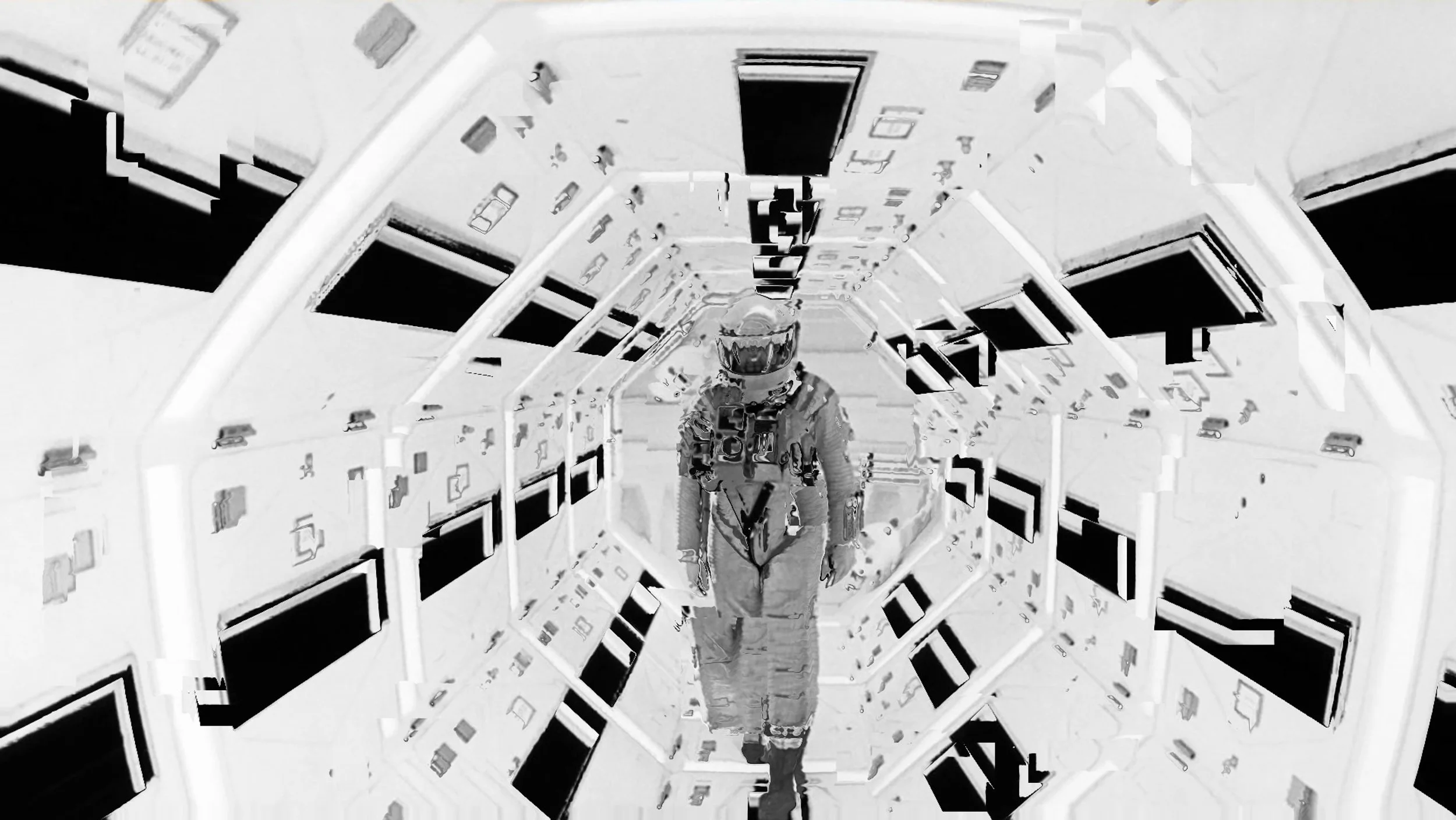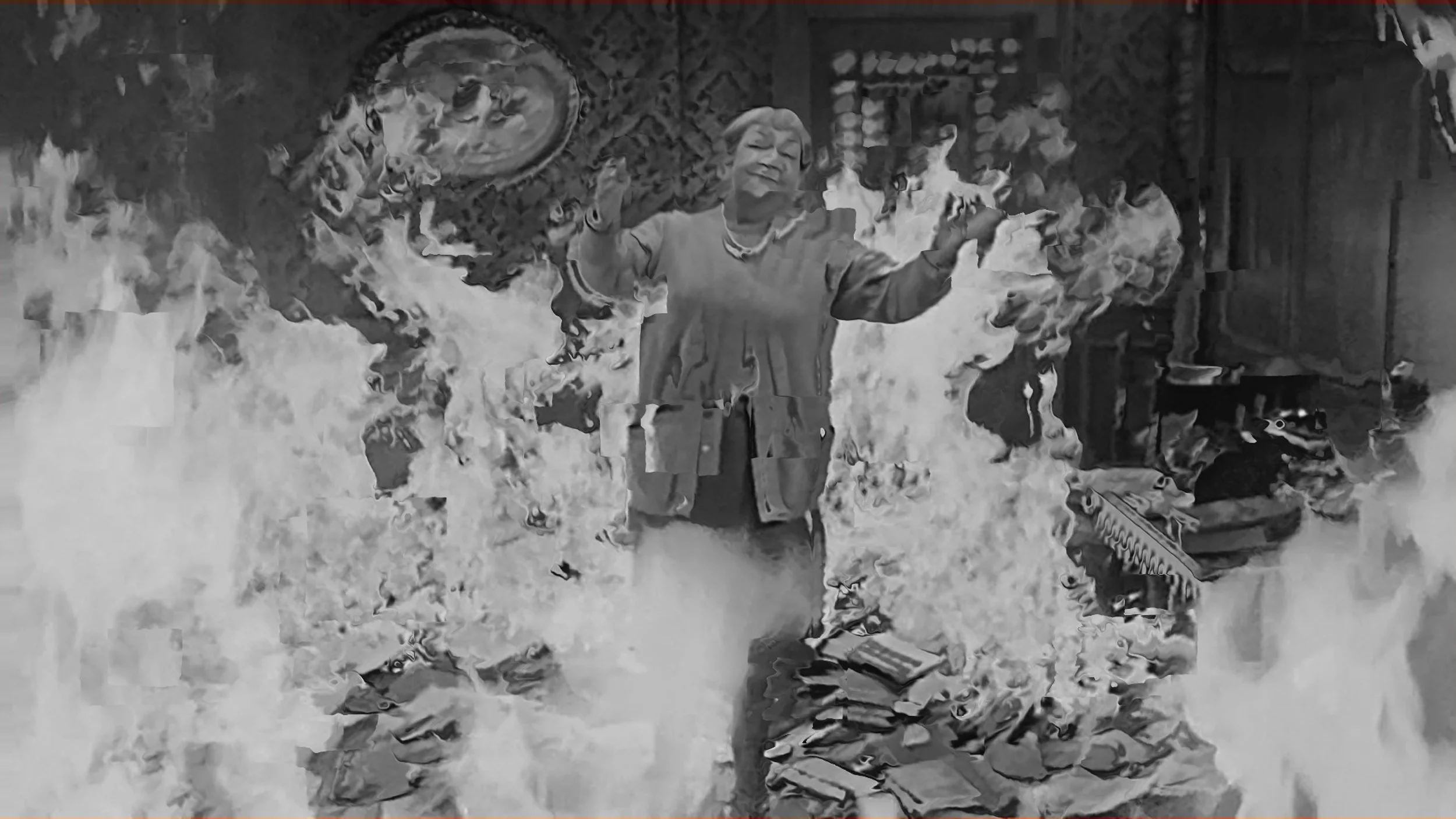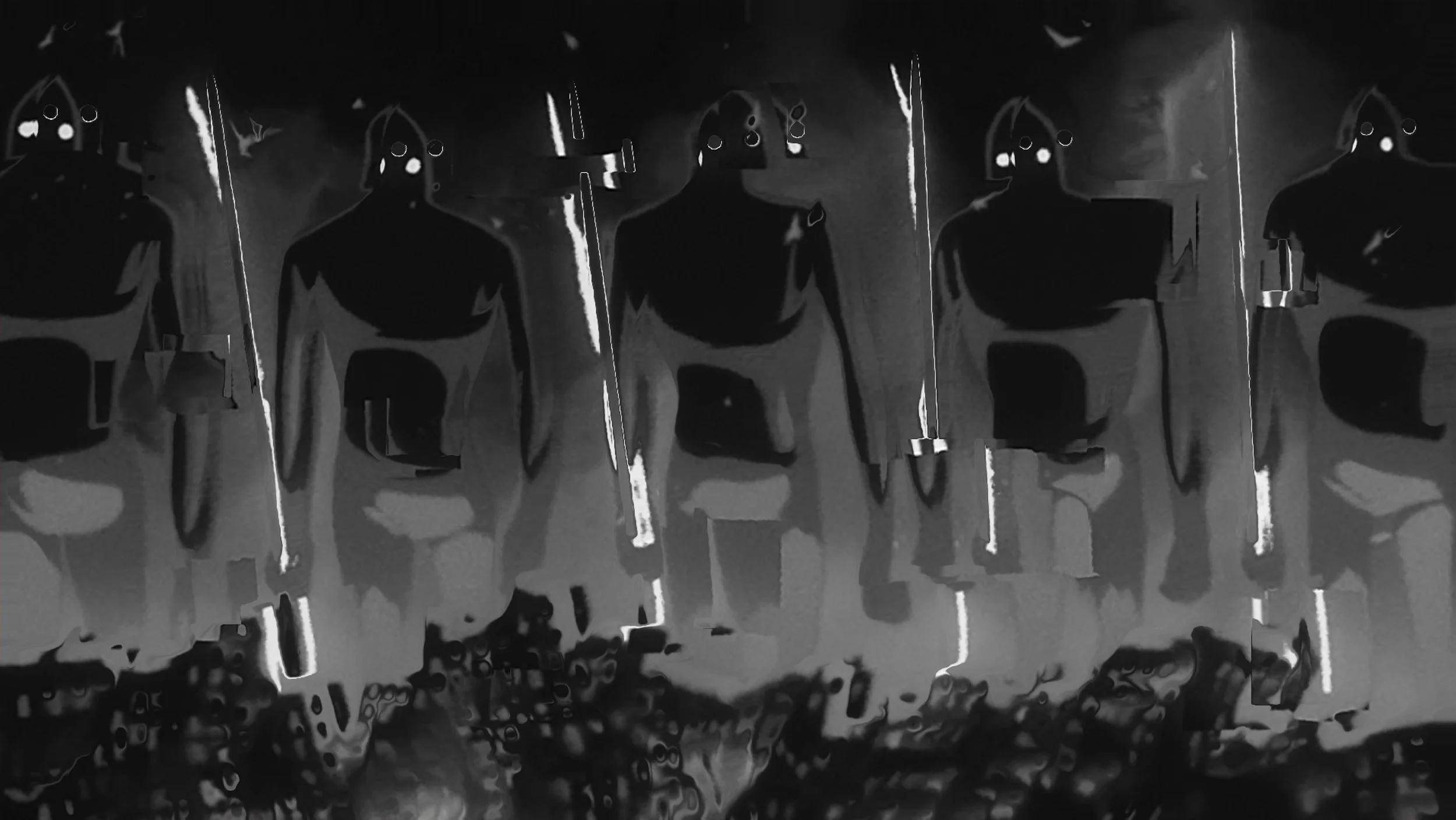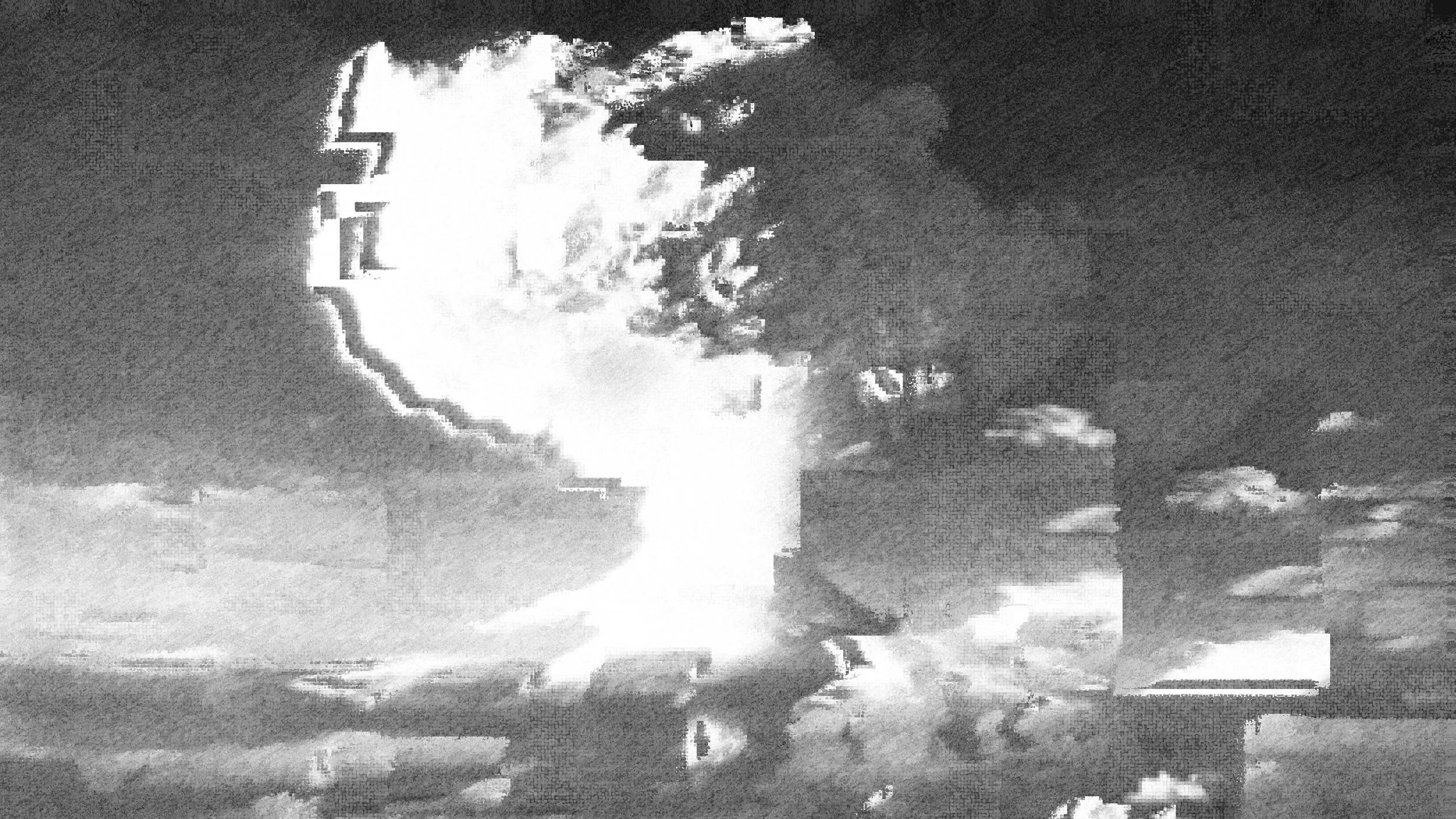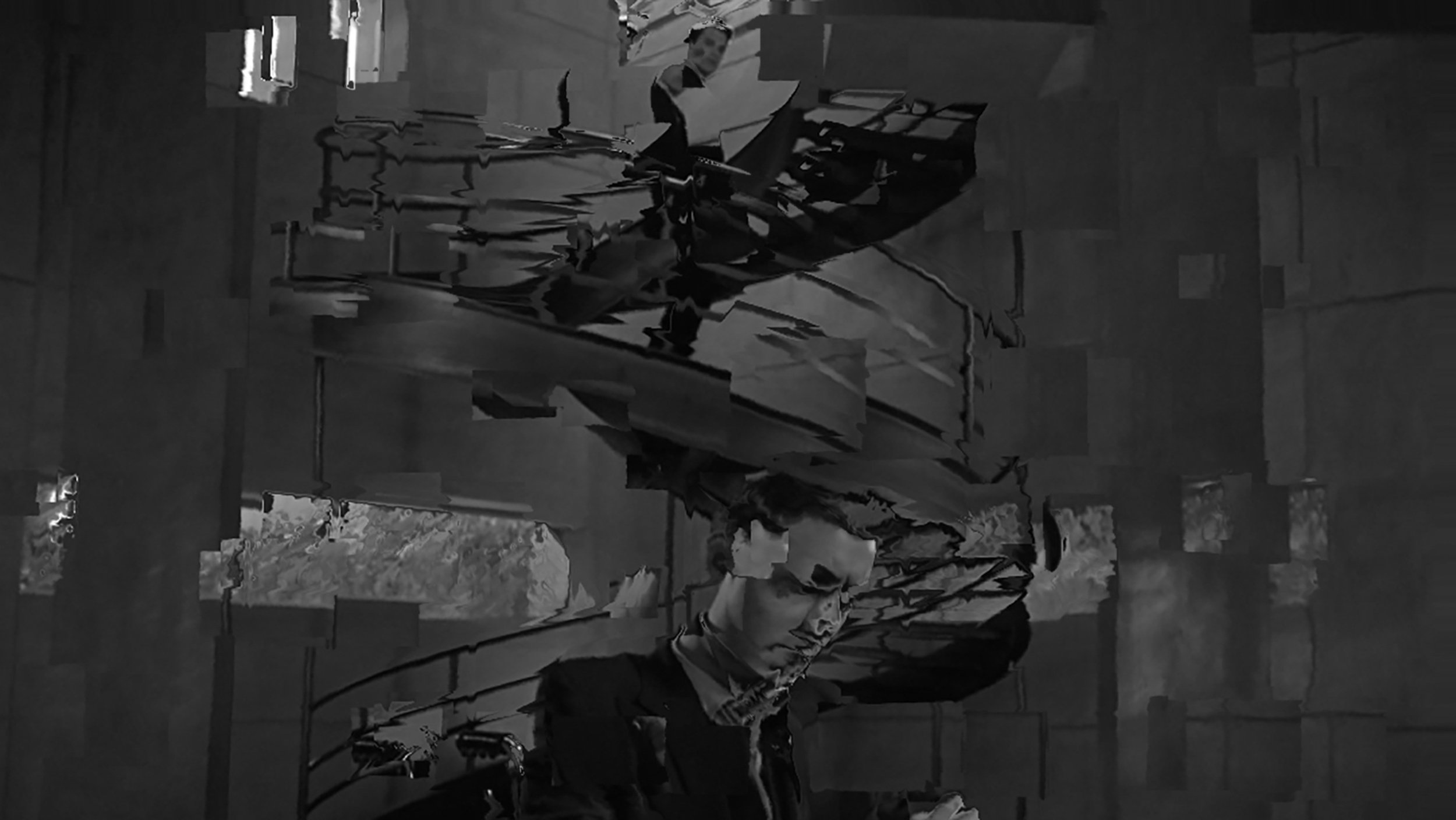In this project I used the book of Konrad Lorenz, Civilized Man's Eight Deadly Sins (1972), where I connected each sin with a scene from a corresponding film. I decomposed that scene in a very specific and technical way using digital means, to end up with the deconstructed stills. The original prints are laptograms / sreen contacts, using photographic paper.
-
![]()
2001: A Space Odyssey
In 2001: A Space Odyssey, "race with ourselves" reflects humanity's push for progress, leading to a conflict between human evolution and the dangers of advanced technology like HAL 9000.
-
![]()
Fahrenheit 451
In Fahrenheit 451, the destruction of traditions is portrayed through the banning and burning of books, symbolizing the loss of knowledge, history, and cultural memory, as society prioritizes conformity and shallow entertainment over meaningful connections to the past.
-
![]()
Nausicaä of the Valley of the Wind
In Nausicaä of the Valley of the Wind, the destruction of living space is depicted through the toxic jungle's spread and humanity’s ecological destruction, reflecting the consequences of war and environmental exploitation. This mirrors the theme of humans disrupting the balance with nature, threatening their own survival.
-
![]()
THX 1138
In THX 1138, the freezing of emotions is portrayed through a highly controlled, dystopian society where citizens are subdued by drugs and rigid laws, suppressing individual feelings and desires to maintain order. This emotional repression dehumanizes people, turning them into obedient, detached beings, devoid of personal identity or genuine connection.
-
![]()
Soylent Green
In Soylent Green, overpopulation is a central theme, leading to severe resource shortages, poverty, and environmental degradation. The film portrays a dystopian future where the struggle to sustain the growing population results in extreme measures.
-
![]()
Dr. Strangelove or: How I Learned to Stop Worrying and Love the Bomb
In Dr. Strangelove, atomic weapons symbolize the absurdity and danger of nuclear arms races, as the film satirizes the reckless military strategies and political paranoia that could lead to global annihilation. It critiques humanity’s irrational embrace of destructive power, showing how reliance on atomic weapons creates a fragile and perilous world.
-
![]()
Gattaca
In Gattaca, genetic breakdown refers to the societal discrimination based on one's genetic makeup, where individuals are judged and limited by their DNA. The film explores the ethical implications of genetic engineering.
-
![]()
The Great Dictator
In The Great Dictator, the power of dogma is highlighted through the rise of authoritarianism, as the film satirizes how blind obedience to ideology and propaganda fuels tyranny. Charlie Chaplin critiques the dangers of fascist dogma, showing how it manipulates and dehumanizes people, leading to oppression and violence.
